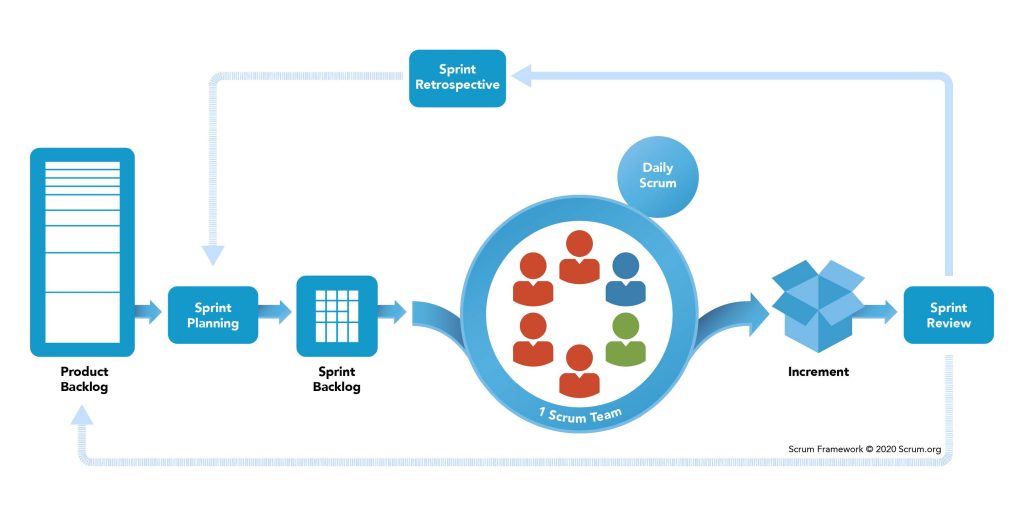How African businesses can get more from Remote teams

For many African business owners, COVID-19’s impact has been dictated greatly by one question: Can my employees work from home or are they bound to the workplace? Before the pandemic, the concept of remote working was largely foreign for many African business owners.
COVID-19 put into high gear a new workplace experiment that had not seen much traction in Africa. Business owners have been forced to adopt unfamiliar remote working models and without prior digital transformation. In most African businesses, the performance of teams is largely dependent on close monitoring of employees.
Our workplace culture is adopted from our social background where, subordinates exercise little autonomy and self management. Decision making, and most importantly execution, is reliant on the “Boss” providing instructions and closely monitoring their execution. The remote way of work requires the “Boss” to trust that their teams will perform and be productive without having to clock in or be in the same room to ensure work is done
> Are remote teams truly productive?
In a study of 400 African businesses conducted by World Wide Worx for Cisco, 29% were found to be up to 30% more productive with the adoption of remote working models.
Amongst the companies that had already undergone digital transformation, this figure leaped to 71% having an increased productivity of up to 46%.
In this guide, we’ll look more closely at how you can adopt SMART remote working models and SMART technology to navigate the African culture of work and set up your remote team for success.
What’s next for remote work: An analysis of 2,000 tasks, 800 jobs, and nine countries, McKinsey Global Institute 2020.

> 1: Deliverables over Clocking in
Are my people working during the set working hours or idling around and doing unrelated work? Unfortunately, unlike the office where you can glance over your shoulder and know if Jane or Michael are still at their desks, this is not possible for remote teams.
Adopting a working model that favors deliverables over clocking in is the SMART way to ensure your team is productive. This means setting tasks to be completed by a set due date. This date, the deadline, should be set in stone and only changeable in the case of an act of God. Delivery of these tasks should also be tied to performance management.
Lack of meeting deadlines or delivering substandard work should be addressed through clear performance management processes and policies.

Action Plan
Handling tasks and deliverables
Break your team’s workload into daily or weekly tasks and set due dates for each task. Have a virtual meeting with your team at the beginning of the week to make sure they understand their deliverables. Provide a platform for guidance of the team in case of any queries. Ensure the deliverables are met by the due date.
Tools
Working on mini projects
Tasks and any deliverables can be managed as mini projects. Software-as-a-service (SaaS) solutions for project management are available in the market. Many like ClickUp have quality freemium versions that can help you manage all your tasks and provide transparency as well as accountability for your team.
Slack is a good communication platform for your team. If you are already on G-Suite or Microsoft 365, their chat functions can also work well as communication tools.
> 2: The AGILE way
Kent Beck and his colleagues (they made AGILE
methodology popular) must be smiling all the way to the bank. Their thinking around how software projects can be delivered effectively and efficiently is now more relevant than ever, beyond the world of software.
You can adopt AGILE to make your team more productive. Surprisingly, AGILE methodologies, especially SCRUM (www.scrum.org) have more monitoring than traditional project management methods. The use of daily standups (daily 15 to 30 minute sessions) that monitor progress on deliverables ensures that your team is on track. Any issues that may arise hindering delivery can also be addressed in these sessions.
Lack of meeting deadlines or delivering substandard work should be addressed through clear performance management processes and policies.

Action Plan
Taking some time to study Agile project management will help in supporting your remote team to deliver on time and in a productive manner.
Tools
Adopting a project management tool like Smartsheet or Monday.com that supports this method will go a long way in ensuring it provides the required results.
> 3: Must everything be a meeting?
You may be anxious that your team may not be able to perform if not closely monitored. This is where meeting madness comes in. Remote working has led to a 13% increase in meetings in American companies. You can only imagine what the figure is for African businesses.
Too many meetings can lead to reduced productivity. You need to ask yourself if a meeting is truly necessary before setting one up.
- Can the question at hand be addressed via a quick email or chat?
- Can the document be produced collaboratively online and approved through an automated process?
Knowing the answers to these questions will prevent unnecessary, unproductive meetings and give your team their time back to use in executing their deliverables.

Action Plan
Productive meetings
Taking some time to study Agile project management will help in supporting your remote team to deliver on time and in a productive manner.
Tools
Collaboration tools
Adopting a project management tool like Smartsheet or Monday.com that supports this method will go a long way in ensuring it provides the required results.
> 4: Tools that bring your team together - no matter where they work
Even the best cooking pot will not produce food”, African proverb. Even the best team will not produce results without the necessary ingredients. For a remote team to be productive, it needs to be equipped with the tools required to execute on their deliverables.
According to the World Wide Worx report for Cisco, only 25% of the 400 businesses surveyed had provided their teams with laptops before COVID-19 hit. Only 37% of the respondents had included Saas technology for collaboration amongst their teams.
85% of workers say having the right technology can either cripple or supercharge their collaboration and productivity.
You need to make sure your team is fully equipped and most importantly, understands how to use the tools provided to deliver on their tasks.
Action Plan
Audit Your Technology
Conduct assessments of your technology to find out how well your tools help your team to collaborate with each other as well as other people outside your business. Ask your team to be involved in the discussion. If they have been working remotely, know they are fully aware of what they need to make their work easier.
Involve the IT department in selecting tools that are affordable, no one wants to add outrageous costs to a business right now. The tools also need to be scalable as the business grows to avoid having to adopt multiple tools over time.
Conclusion
Handling tasks and deliverables
It is difficult to run an African business even in “normal” circumstances. COVID-19 has made it even harder. As a business owner, you still recognise your team as your most valuable asset to keep your business running and growing even in these uncertain times. This is why adopting the right remote working model and the right tools to enable your business to adapt and thrive is crucial.
Making SMART remote working choices will not only solve the productivity problem, they will allow you to simplify your business, make it more efficient and the best thing, save costs. Your team will also feel more empowered and confident to deliver on their tasks which in turn will increase the quality of their work.
Most businesses concentrate on creating processes but forget to think about the workflows i.e. how the processes will be implemented. Workflows are an important part of keeping a lean, mean business machine that is efficient, cost-effective and scalable. They must therefore not be ignored.
Want support to build digital workspaces?
Are your workflows supporting your desired results?

You want your business to be efficient, cost-effective and scalable. For this to happen, you need to lay a strong foundation for your operations. This strength lies in your business processes. A business process is as strong as the workflow designed to support its implementation.
So what is the difference between a process and a workflow? Think of building a house. You need bricks to build the walls. However, these bricks must have something holding them together and in place otherwise, your wall will not stay put for very long (unless you have some pyramid technology going on). The bricks are the business processes and the mortar your workflows.
> Example: Inbound Sales
Let’s take the example of inbound sales. The house is inbound sales. That is what you are building. The back wall is one of the inputs that will support the house. The back wall can represent inbound marketing. The process for inbound marketing may look like this:
> Marketing team acquires leads list
> Creates email campaign
> Email campaign approval by manager
> Campaign upload on email marketing tool
> Emails sent to leads
> Team monitors campaign performance
> Team does lead scoring
> Team forwards any MQLs (marketing qualified leads) to Sales team
But how do you actually implement this process in an efficient, cost-effective and scalable way?
> Workflows: The mortar holding your campaign together
This is where the mortar comes in, the workflows. Let’s take Marketing team acquires leads list (Brick 1) and Campaign uploaded on email marketing tool (Brick 2). The mortar would be:
- A workflow that shows how the leads are acquired in the first place. Are you using a web crawler to obtain contact information from websites? Does the marketing team have a research function to look into leads and acquire contact information? How long is this supposed to take?
- A workflow that shows how the leads database is being managed. Where are the acquired leads stored? Are these accessible to the entire marketing team? Is someone confirming the accuracy of the data collected to avoid a high bounce rate for your campaign? How often is the database updated? Is the information available up to date or have some emails changed?
- A workflow that shows how the email campaign is created. Is the campaign content targeted to the type of leads on the leads database? Is the content targeting the entire leads database or are the leads separated into specific lists? Are you creating content specific to each list? What tool is being used to create the images?
- A workflow that shows how the content and the leads lists are uploaded onto the marketing tool. Is the content creation tool integrated with the email marketing tool. How quickly can we load the list and content onto the tool? How manual is the process and can the leads list be automatically uploaded into the email marketing tool?

Analyse. Optimize. Repeat
This is just the beginning. You will need to constantly review the set workflows. This will involve checking if the activities, the actors (people and tools), the results and the state (the flow of the process) are all aligned to provide you with the efficiency, cost reduction and scalability you are after. Without continuous application of the right amount of mortar to the bricks making up your back wall, the bricks would not hold and your back wall would crumble. Without the back wall, the house would be incomplete.
Most businesses concentrate on creating processes but forget to think about the workflows i.e. how the processes will be implemented. Workflows are an important part of keeping a lean, mean business machine that is efficient, cost-effective and scalable. They must therefore not be ignored.


